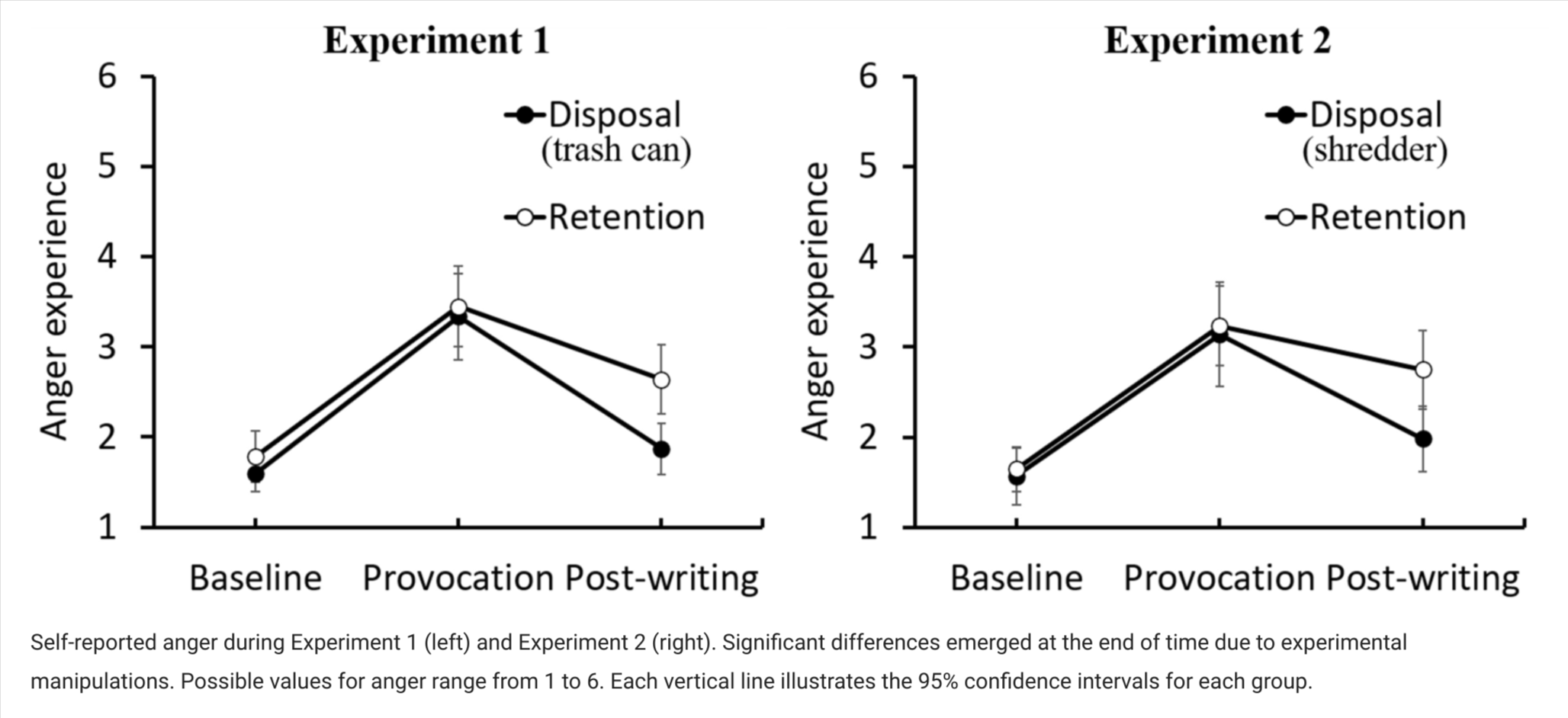New posts from thoughtshrapnel.com
Thought Shrapnel
Slouchers rejoice!

My maternal grandmother was so paranoid about having a poor posture that she put a bamboo pole behind her back, and rested her wrists over the top of each side. The idea was to keep a straight back into old age. She did well to worry, as her sister, my Great Aunt, had osteoporosis. Of course, no amount of posture-correcting exercise is going to help you if your bones start crumbling.
This article in TIME is interesting in that it problematising the history of the posture-correcting ‘industry’ (for want of a better term). TL;DR: there’s no single, correct posture. Thank goodness for that.
By the mid 20th century, poor posture came to be seen as the culprit for rising rates of low back pain, even though little hard evidence existed to prove such claims of causality. President John F. Kennedy, who had repeated back surgeries and chronic pain, hired his own personal posture guru, Hans Kraus, a man who would go on to create one of the most well-known posture and fitness tests administered to hundreds of thousands public school children throughout the Cold War. It was in this cultural and political context of containment that uprightness became a symbol of patriotism, heterosexual propriety, and individualist strength, all virtues believed to be needed in order to defeat the threat of communism.
[…]
On the face of it, posture improvement campaigns may seem rather innocuous. What is the harm, after all, of engaging in posture exercise programs? Of buying chairs, shoes, and devices that help to encourage it?
On an individual level, it is entirely possible that an enhanced sense of wellness can come from taking up yoga or purchasing an ergonomic chair. But when looking at the long history of posture improvement campaigns from an historical and structural standpoint, it becomes evident how value-laden they are, and how they can perpetuate sexism, ableism, and racism.
[…]
A recent study published by physical therapists working in Qatar, Australia, Ireland, and the United Kingdom speaks to the urgent need of the profession to dispel the medicalized myth that poor posture leads to bad health. “People come in different shapes and sizes,” they write, “with natural variation in spinal curvatures.”
In short, there is no single, correct posture. Nor does posture correction necessarily ensure future health. Maybe it’s ok to slouch from time to time, after all.
Source: TIME
Disinformation is free

This is an interesting post by Ian Betteridge, mainly because of the point he makes at the end about disinformation leading to a retreat behind paywalls. I think it’s inevitable that any open/social space without a governance model that specifically focuses on high-quality moderation (rather than increasing ‘shareholder value’) will have problems.
The answer is retreating to people we know and trust, but this doesn’t have to be in dark forests. We can use decentralised moderation models such as Bluesky and others are developing. My main concern is that we reach peak disinformation during an important election year before these mitigating technologies come to fruition.
“Grey goo” was a concept which emerged when nanotechnology was the hot new thing. First put forward by Eric Drexler in his 1986 book The Engines of Creation, this is the idea that self-replicating nanobots could go out of control and consume all the resources on Earth, turning everything into a grey mass of nanomachines.
Few people worry about a nanotech apocalypse now, but arguably we should be worried about AI having a very similar effect on the internet.
[…]
It is obvious that anywhere content can be created will ultimately be flooded with AI-generated words and pictures. And the pace of this could accelerate over the coming years, as the tools to use LLMs programmatically become more complex.
[…]
This is the AI Grey Goo scenario: an internet choked with low-quality content, which never improves, where it is almost impossible to locate public reliable sources for information because the tools we have been able to rely on in the past – Google, social media – can never keep up with the scale of new content being created. Where the volume of content created overwhelms human or algorithmic abilities to sift through it quickly and find high-quality stuff.
[…]
With reliable information locked behind paywalls, anyone unwilling or unable to pay will be faced with picking through a rubbish heap of disinformation, scams, and low-quality nonsense.
In 2022, talking about the retreat behind paywalls, Jeff Jarvis asked “when disinformation is free, how can we restrict quality information to the privileged who choose to afford it?” If the AI-driven information grey goo scenario comes to pass, things would be much, much worse.
Source: [Ian Betteridge](ianbetteridge.com/2024/01/2…
A pharmacology of digital tools

This article in Aeon is the first time I’ve come across the French philosopher Bernard Stiegler who owned a jazz club which was shut down for illegal prostitution, and developed his philosophy of ‘technics’ while in prison for armed robbery.
Stiegler saw technics as the foundation of human existence, influencing our future possibilities and our sense of being. His view was that acknowledging the role of technology is essential to understand our reality and imagine alternative futures. He believed that while technology has the potential to standardise and limit our experiences, it also offers the ability to reshape human identity and cultural practices positively.
One to explore further, especially in terms of his idea of a pharmacology of digital tools.
In the late 20th century, Stiegler began applying [his ideas] to new media technologies, such as television, which led to the development of a concept he called pharmacology – an idea that suggests we don’t simply ‘use’ our digital tools. Instead, they enter and pharmacologically change us, like medicinal drugs. Today, we can take this analogy even further. The internet presents us with a massive archive of formatted, readily accessible information. Sites such as Wikipedia contain terabytes of knowledge, accumulated and passed down over millennia. At the same time, this exchange of unprecedented amounts of information enables the dissemination of an unprecedented amount of misinformation, conspiracy theories, and other harmful content. The digital is both a poison and a cure, as Derrida would say.
This kind of polyvalence led Stiegler to think more deliberately about technics rather than technology. For Stiegler, there are inherent risks in thinking in terms of the latter: the more ubiquitous that digital technologies become in our lives, the easier it is to forget that these tools are social products that have been constructed by our fellow humans. How we consume music, the paths we take to get from point A to point B, how we share ourselves with others, all of these aspects of daily life have been reshaped by new technologies and the humans that produce them. Yet we rarely stop to reflect on what this means for us. Stiegler believed this act of forgetting creates a deep crisis for all facets of human experience. By forgetting, we lose our all-important capacity to imagine alternative ways of living. The future appears limited, even predetermined, by new technology.
[…]
The pharmacology of technics, for Stiegler, presents opportunities for positive or negative relationships with tools. ‘But where the danger lies,’ writes the poet Friedrich Hölderlin in a quote Stiegler often turned to, ‘also grows the saving power.’ While Derrida focuses on the ability of the written word to subvert the sovereignty of the individual subject, Stiegler widens this understanding of pharmacology to include a variety of media and technologies. Not just writing, but factories, server farms and even psychotropic drugs possess the pharmacological capacity to poison or cure our world and, crucially, our understanding of it. Technological development can destroy our sense of ourselves as rational, coherent subjects, leading to widespread suffering and destruction. But tools can also provide us with a new sense of what it means to be human, leading to new modes of expression and cultural practices.
[…]
Technical innovations are never without political and social implications for Stiegler. The phonograph, for example, may have standardised classical musical performances after its invention in the late 1800s, but it also contributed to the development of jazz, a genre that was popular among musicians who were barred from accessing the elite world of classical music. Thanks to the gramophone, Black musicians such as the pianist and composer Duke Ellington were able to learn their instruments by ear, without first learning to read musical notation. The phonograph’s industrialisation of musical performance paradoxically led to the free-flowing improvisation of jazz performers.
Source: [Aeon](aeon.co/essays/be…
If you're going to go, you might as well go... weirdly?

I stumbled across a Wikipedia page entitled ‘List of unusual deaths’. I was only going to share three of them, but there are so many bizarre ones on there that I couldn’t help sharing more.
Sigurd the Mighty of Orkney (892 CE): The second Earl of Orkney strapped the head of his defeated foe Máel Brigte to his horse’s saddle. Brigte’s teeth rubbed against Sigurd’s leg as he rode, causing a fatal infection, according to the Old Norse Heimskringla and Orkneyinga sagas.
Hans Staininger (1567): The burgomaster of Braunau (then Bavaria, now Austria), died when he broke his neck by tripping over his own beard. The beard, which was 4.5 feet (1.4 m) long at the time, was usually kept rolled up in a leather pouch.
Thomas Otway (1685): The English dramatist fell on hard times and was suffering from poverty in his later years, and was driven by starvation to beg for food. A gentleman who recognized him gave him a guinea, with which he hastened to a baker’s shop, purchased a roll, and choked to death on the first mouthful.
John Cummings (1809): After seeing a circus knife-swallower, seaman John Cummings began actually swallowing knives. On one occasion, he swallowed four knives, and quickly passed three with no ill-health. He later swallowed 14 knives, and after some days with abdominal pain, he passed all of them. He finally swallowed 20 knives and a clasp knife case, but after a few days, he had only passed the case; he died after four years in pain. On autopsy, a knife blade and spring were found in his intestines, and between 30 and 40 fragments of metal, wood, and horn in his stomach.
Mathilda of Austria (1867): The daughter of Archduke Albrecht, Duke of Teschen set her dress on fire while trying to hide a cigarette from her father, who had forbidden her to smoke.
Sir William Payne-Gallwey, 2nd Baronet (1881): The former British MP died after sustaining severe internal injuries when he fell on a turnip while hunting.
Thornton Jones (1924): The lawyer from Bangor, Gwynedd, Wales, woke up to find that he had his throat slit. Motioning for a paper and pencil, he wrote, “I dreamt that I had done it. I awoke to find it true”, and died 80 minutes later. He had done it himself while unconscious. An inquest at Bangor delivered a verdict of “suicide while temporarily insane”.
Isadora Duncan (1927): The American dancer broke her neck in Nice, France when her long scarf became entangled in the open-spoked wheel and rear axle of the Amilcar CGSS automobile in which she was riding.
David Grundman (1982): While shooting at cacti with his shotgun near Lake Pleasant Regional Park, Arizona, he was crushed when a 4-foot (1.2 m) limb detached and fell on him.
Vladimir Likhonos (2009): The 25-year-old student of Kyiv Polytechnic Institute from Konotop was killed when his chewing gum exploded. He had a habit of dipping his chewing gum in citric acid to increase the gum’s sour taste. On his work table police found about 100 grams (3.5 oz) of unidentified explosive powder which he used for chemistry studies at home. It resembled citric acid, and it is thought that he confused the two, having accidentally coated his gum in the explosive powder before chewing it. The explosive was found to be four times stronger than TNT, and the explosion was possibly triggered either by reacting with Likhonos’s saliva, or the pressure exerted by him chewing on the gum and explosive powder.
Ilda Vitor Maciel (2012): The 88-year old died in a hospital in Barra Mansa, Rio de Janeiro, allegedly as a result of nursing technicians injecting soup through her intravenous drip instead of her feeding tube.
Sam Ballard (2018): The 29-year old from Sydney, Australia, died from angiostrongyliasis after eating a garden slug as a dare eight years earlier.
Shivdayal Sharma (2023): The 82-year-old was reportedly urinating next to a train track in the region of Alwar, India, when a cow was hit by the Vande Bharat express train. The animal was launched 100 feet (30 m) into the air before landing on Sharma, killing him instantly.
Source: Wikipedia
Image: The death of Aeschylus, killed by a turtle dropped onto his head by a falcon
Tearing your anger into strips

A new paper in Nature suggests that writing down your feelings of anger and then disposing of the piece of paper can rid yourself of the angry feelings. Interestingly, or tellingly, the paper starts by talking about parental anger and the importance of demonstrating emotional self-regulation.
I’ve done something similar in terms of emotional processing with my own kids. For example, when my son was around four years old, the bird hide in the park behind our house was set on fire deliberately. An act of arson. He was inconsolable, and had nightmares. I got him to draw a picture of what had happened and to use it to talk about what happened, which seemed to be cathartic.
Anger suppression is important in our daily life, as its failure can sometimes lead to the breaking down of relationships in families. Thus, effective strategies to suppress or neutralise anger have been examined. This study shows that physical disposal of a piece of paper containing one’s written thoughts on the cause of a provocative event neutralises anger, while holding the paper did not. In this study, participants wrote brief opinions about social problems and received a handwritten, insulting comment consisting of low evaluations about their composition from a confederate. Then, the participants wrote the cause and their thoughts about the provocative event. Half of the participants (disposal group) disposed of the paper in the trash can (Experiment 1) or in the shredder (Experiment 2), while the other half (retention group) kept it in a file on the desk. All the participants showed an increased subjective rating of anger after receiving the insulting feedback. However, the subjective anger for the disposal group decreased as low as the baseline period, while that of the retention group was still higher than that in the baseline period in both experiments. We propose this method as a powerful and simple way to eliminate anger.
Source: Nature
How not to mince about like a little weasel

It would be remiss of me not to mark the extraordinary achievement of Russell “Hardest Geezer” Cook, who has run the entire length of Africa. This interactive map not only charts the daily progress he made, but links to his social media accounts.
My favourite part of the story, which backs up his nickname, comes when he had scans due to persistent back pain. Finding no bone damage, he concluded that “the only option left was to stop mincing about like a little weasel, get the strongest painkillers available and zombie stomp road again”.
Incredible.
The 27-year-old from Worthing, West Sussex, said he had struggled with his mental health, gambling and drinking, and wanted to “make a difference”.
After running through 16 countries, he has raised in excess of £700,000 for charity and has completed his final run.
As he crossed the finish line at about 16:40 BST in Ras Angela, Tunisia, Mr Cook was greeted by a shouting crowd, with many chanting “geezer”.
“I’m pretty tired,” he told reporters and in a post on X, formerly known as Twitter.
Source: BBC News
Social media without an audience

What I appreciate about Drew Austin’s writing is how concisely he can string together important points. Go and read the three long paragraphs of this post, which I’ve summarised out of order below.
My understanding is that Austin is saying that our mental model of social media is out of kilter with the current reality. We’re pretending that the current landscape is in any way similar to that of a decade ago.
[A] 2021 essay, The Brazilianization of the World by Alex Hochuli, describes how “the fate of being modern but not modern enough now seems to be shared by large parts of the world: WhatsApp and favelas, e-commerce and open sewers.” As a small cohort of venal elites separates itself, physically and socially, from the much larger and poorer population in which it’s embedded, it creates an idea of interior and exterior existence. The Twitch streamer with no audience anticipates life on the outside, in the dead public space of a Brazilianized, enclave-gated internet, a ground that shifted under our feet with little warning, turning us into street buskers playing music we didn’t realize no one could hear.
[…]
Talking to no one is the near future of social media, the digital equivalent of warming your hands over an oil drum bonfire in an abandoned city—what you do when you missed the last bus out of town and have to loiter as comfortably as possible in the ruins. We may have once imagined that social media would ultimately end by imploding suddenly, releasing us from the last day of school into a summer of the real, but no such catharsis is coming. When institutions die now, they rarely give us the closure of ceasing to exist—they live on in zombie form, and we learn to tolerate the gradually worsening conditions they impose. We stick around Twitter because we need to for professional reasons, we may tell ourselves, but the real job is just scavenging copper wires from the wreckage.
Source: Kneeling Bus
Image: Patrick Busslinger